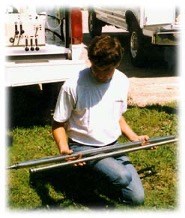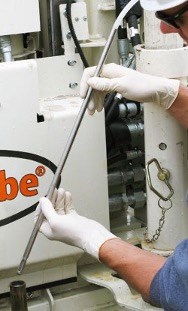New Depths for Groundwater Profiling
By: CascadeSuccessful groundwater profiling is essential for effective subsurface site characterization. Both fieldwork and academic studies have shown that contaminant flow in a saturated zone depends on the varying transmissivities of each strata through which groundwater, and the contaminant mass, move. Contaminant plumes do not typically exhibit “teardrop” shapes as previously depicted in earlier site investigations but rather appear as elongated lobes mimicking the subsurface mass-flux. This makes long-screened monitoring wells potentially unrepresentative of actual groundwater quality, as the data is flow-weighted and depth-averaged.
Importance of Discrete Groundwater Sampling
Obtaining discrete groundwater samples during borehole advancement helps clarify the dissolved-phase plume anatomy. It permits targeted placement of well screens within precise intervals and identifies whether the contaminant mass may be confined to high or low transmissive zones. Depending on the sampling tool, it can help determine if persistently detected impacts are a result of back-diffusion from finer strata, often considered a secondary source.
Tools Used in Groundwater Profiling
WaterlooAPS™ - The Advanced Profiling System
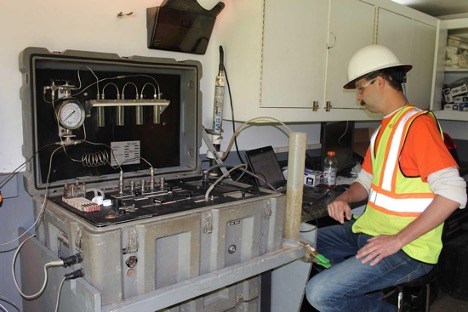
WaterlooAPS is a premier high-resolution site characterization tool for overburden formations using a Direct Push Technology (DPT) rig platform. This tool allows the collection of discrete groundwater samples at varying depths within a single borehole without the need to remove, decontaminate, and re-advance tooling between samples. Each sample interval yields a corresponding index of hydraulic conductivity, providing continuous hydrostratigraphic logging of the subsurface. Water quality parameters are monitored through a flow cell, ensuring samples are from undisturbed formation water.
The Screen Point 16 and 22 Tools (SP22)
*images from GeoProbe
Manufactured by GeoProbe, these tools offer another method to obtain overburden groundwater samples using a DPT rig. DPT rods are advanced to the target sample depth with an expendable point at the base of the rod. A stainless steel screen is then inserted and lowered to the base of the rod string, which is then withdrawn to expose the screen to the formation and target interval. The exposed screen length can be varied up to four feet, allowing for sample collection and hydraulic conductivity testing within the screened interval.
Groundbreaking Profiling Tools from Cascade Environmental
In challenging formations such as heaving sand, ablation tills with boulders and cobbles, and even bedrock, a sonic drilling rig may be mobilized to advance through the material and obtain groundwater profile data. Cascade Environmental offers two sonic groundwater profiling tools: the Push-Ahead and Packer Isolation methods.
The Push-Ahead Groundwater Profiler
The Push-Ahead groundwater profiler is a sealed, heavy-gauge steel point threaded to the base of a three-inch sonic drill rod and driven through and ahead of the sonic casing to the target depth. This method is ideal for coarse-grained deposits where heaving sands have been encountered with conventional drilling methods.
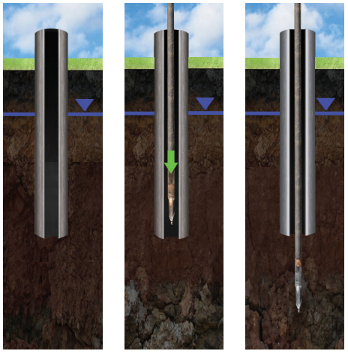
Process:
-
The profiler is threaded to the base of the drill string and advanced below the sonic casing to the prescribed groundwater sample interval.
-
A water level indicator is lowered through the drill string to ensure no formation water has accumulated inside the profiler and drill pipe.
-
The threaded portion between the profiler and drill steel is partially unthreaded to expose the water ports, allowing native formation water to enter the profiler.
-
A groundwater sample is then obtained using either a stainless steel bailer or pump with tubing.
Benefits:
-
Samples are collected from native, undisturbed formations.
-
Sonic casing can remain in place until groundwater analytical results are obtained.
-
Wells can be constructed to target zones of greatest impact.
The Packer Isolation Method
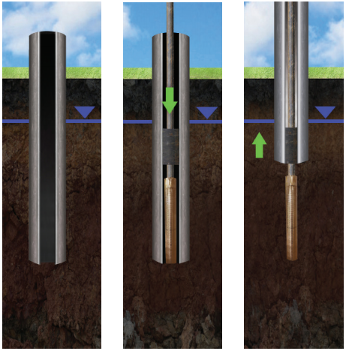
The Packer Isolation Method is designed for collecting groundwater samples in dense overburden or bedrock boreholes where the Push-Ahead method may be less effective.
Process:
-
A sonic drill with a core barrel and override casing proceeds to the base of the target sample interval.
-
The core barrel is removed, and a stainless steel screen and packer assembly is inserted to the base of the casing.
-
The casing is extracted to expose the screened interval to the formation, and the packer is inflated inside the casing to isolate the screen.
-
Purging of the temporary well proceeds until stabilization parameters are met, and samples are collected.
Benefits:
-
Screen lengths can be adjusted to match specific intervals.
-
Samples can be collected within any formation through which a sonic rig can drill.
-
Larger screens allow for higher purge rates and greater sample depths.
Choosing the Right Tool for the Job
Each profiling tool has its advantages and disadvantages:
-
SP22 Tools: Quick deployment and minimal experience required but necessitate multiple boreholes for multiple intervals.
-
WaterlooAPS: Near-continuous discrete sampling and hydraulic conductivity data from a single push but requires an experienced operator and is slightly more expensive.
-
Sonic Profiling Tools: Ideal for difficult formations, allowing samples from a single boring but are costly due to the sonic rig.
Whatever characterization challenges your job site presents, Cascade Environmental has the expertise and equipment to get the job done.
Learn More
To learn more about groundwater profiling, site characterization, sonic drilling, and more, get in touch with us today!
